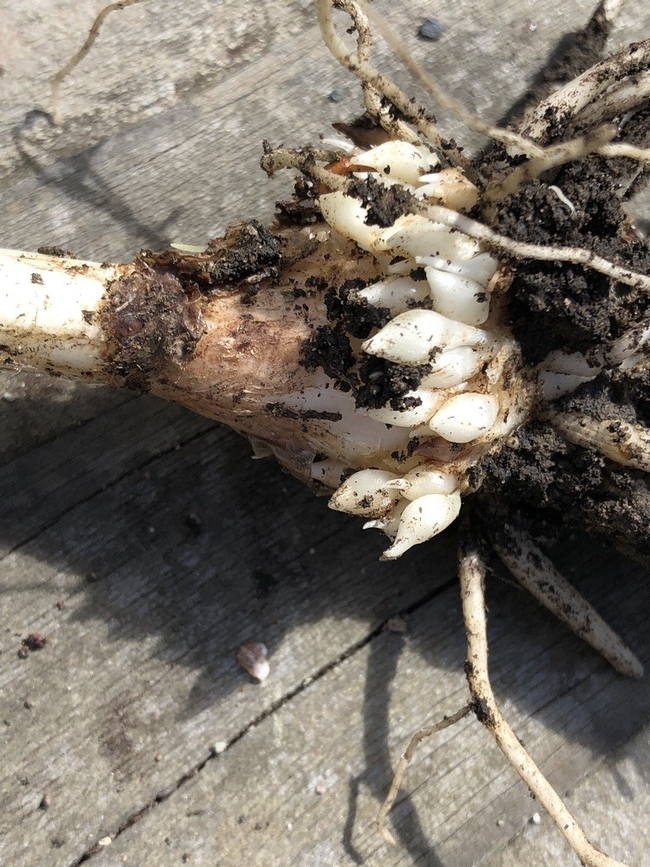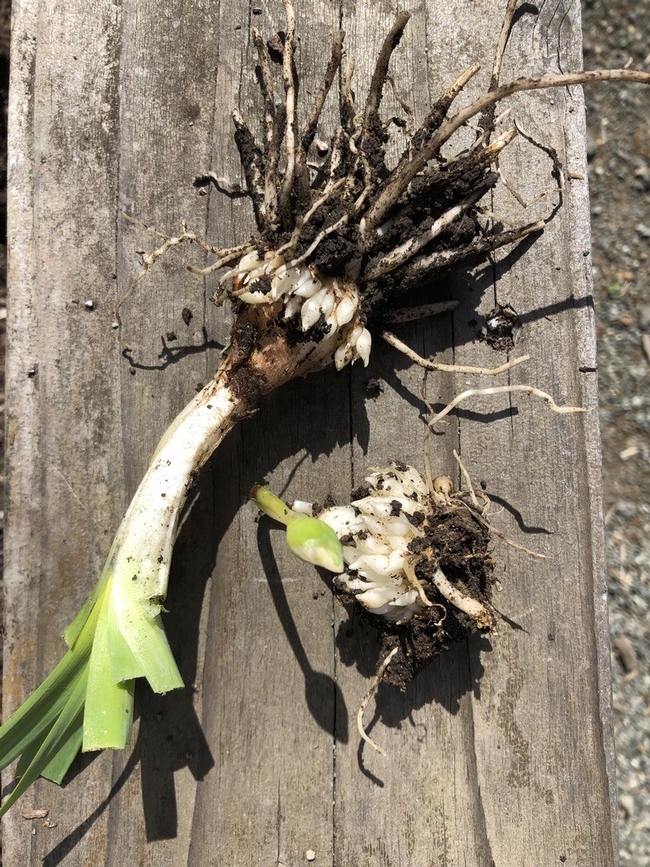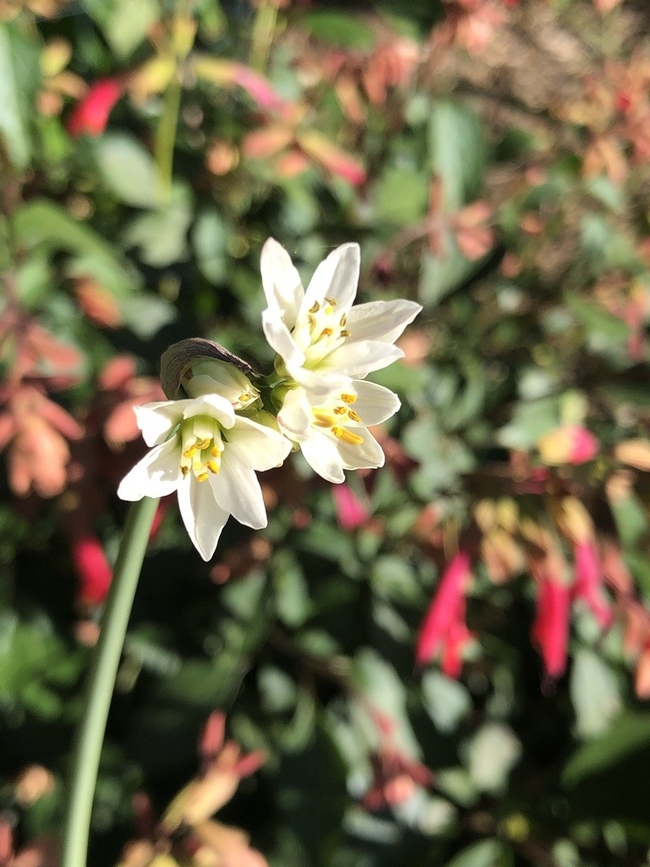Dealing with the Devil Bulb
Nothoscordum gracile, commonly known as “slender false garlic” or the“devil bulb,” truly deserves its latter name as it attempts to take over my back yard. Nothoscordum gracile is somewhat similar to a wild onion in that it has long, narrow leaves and little white flowers. But this plant has longer and more gray-green leaves and white flowers with pink stripes. It is a much taller plant overall than the wild onion and blooms through the summer.
Nothoscordum gracile's success lies in its bulbs. Once the plant forms three leaves, it begins producing bulblets. The central bulb is surrounded by many, tiny, bublets that fall off as you dig up the plant. They are so tiny that it is hard to capture them all. In my yard, we have to dig at least 6 inches deep, and usually deeper, to get to the central bulb. To avoid breaking the central bulb and spreading bublets, we have to dig carefully and remove the bulb and soil entirely. This year, where feasible, we are now digging up and removing yards of soils to get as many bulbs and bublets as possible. We aren't fooling ourselves that we will get them all.
When we had renovated our yard several years ago, we asked the landscaper to dig out the dirt in the problem areas because we knew the bulbs spread easily. I have a strong suspicion that the landscaper didn't take us seriously because the plant is more widespread than before. Moving the dirt around, instead of removing it, spread the bulbs even farther.
But digging big holes isn't always feasible. The devil bulb is very clever at nestling at the base of other plants and often can't be dug up without harming the plant that you want to keep. In that case, I break off the plant as close to the surface as I can, or if it is possible to dig a little, I dig as deeply as I can even if I am only getting the stalk and not the bulb. My hope is that such continued efforts will reduce the plant's ability to obtain energy. I'm not optimistic that it helps, but at least I feel better for doing something. I also make it a priority to remove all the flowers so that they don't go to seed, but frankly, I haven't noticed a reduction in plants the following year when I do this. I think the main issue is the spread of the bulbs. We try to limit the use of herbicides in our backyard, but we have tried them as well and they didn't work at all.
I wish I could end on a more optimistic note, but the devil bulb truly is a scourge in my backyard. I hope that our persistence and removal of dirt where feasible will help slow the bulbs' spread at least.
For more information on eradicating the devil bulb, see Pam Peirce's article “Eradicating noxious N. gracile devil bulbs” (May 19, 2011) at https://www.sfgate.com/homeandgarden/goldengategardener/article/Eradicating-noxious-N-gracile-devil-bulbs-2370868.php.

photos by Erin Mahaney

thumbnail UNADJUSTEDNONRAW thumb 2a154

thumbnail UNADJUSTEDNONRAW thumb 2a172


Posted by neil on October 10, 2023 at 4:51 AM